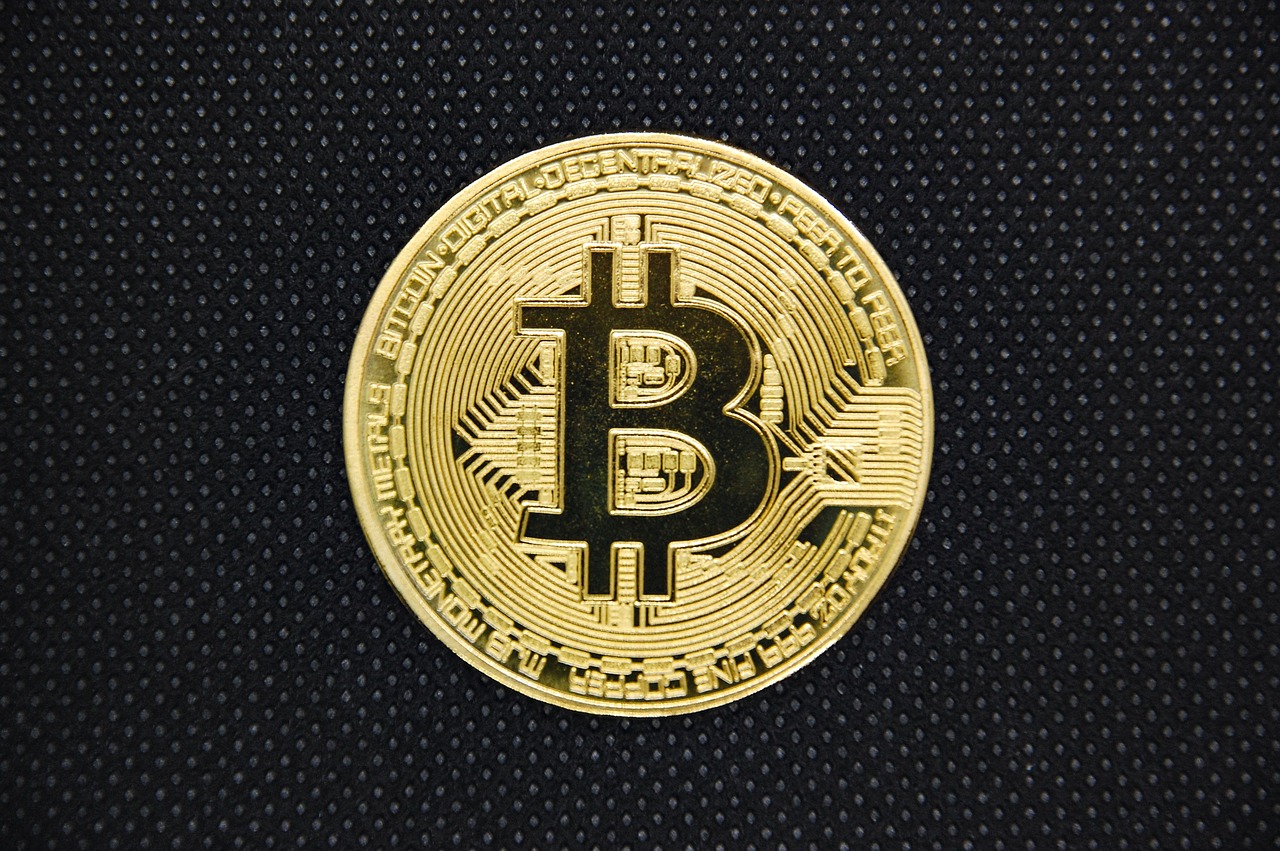The safest approach for a beginner to acquire their initial cryptocurrency involves selecting a reputable exchange with strong security protocols. Prioritize platforms that require two-factor authentication and have transparent regulatory compliance. Avoid peer-to-peer transactions in the early stages to minimize exposure to scams.
Understanding each step is critical: start by creating an account on a trusted service, verifying identity thoroughly, and funding the wallet through established payment methods like bank transfers or credit cards. Confirm all transaction details carefully before confirming any purchase to prevent errors or fraud.
Storing assets in a personal hardware or software wallet immediately after acquisition reduces risks associated with online exchanges. Learning how to transfer coins from the platform to private storage ensures control over funds and enhances protection against hacking attempts.
How to Buy Your First Bitcoin Safely
Acquiring bitcoin for the initial time requires a clear understanding of secure procedures and reliable platforms. Selecting a reputable cryptocurrency exchange is the foundational step, as it ensures that funds are handled with proper regulatory compliance and security protocols such as two-factor authentication (2FA) and cold storage practices. Platforms like Coinbase, Kraken, and Binance provide beginner-friendly interfaces while maintaining strong protections against fraud.
Once an exchange is chosen, setting up an account involves identity verification in line with Know Your Customer (KYC) regulations. This process prevents illicit activities but also safeguards users by confirming legitimacy. Funding the account typically occurs via bank transfer or credit card, each method having distinct fees and processing times; bank transfers usually offer lower fees but take longer compared to instant card payments.
Step-by-Step Process for a Secure Bitcoin Acquisition
- Create an account on a trusted exchange ensuring all personal information is correctly submitted.
- Enable security features, including 2FA and email notifications for account activity.
- Deposit fiat currency through preferred payment methods; be mindful of associated costs and limits.
- Select bitcoin from the available cryptocurrencies on the platform’s trading interface.
- Specify purchase amount, considering minimum thresholds imposed by exchanges to avoid transaction errors.
- Confirm the transaction details, double-checking wallet addresses if transferring coins off-platform immediately after acquisition.
An important safeguard beyond exchange-based storage is transferring acquired bitcoin into a private wallet under user control. Hardware wallets like Ledger or Trezor provide enhanced protection against online threats by storing private keys offline. For beginners uncomfortable with hardware wallets, software wallets such as Electrum offer user-friendly alternatives, though they require strict device security maintenance to prevent malware attacks.
The volatility inherent in cryptocurrency markets necessitates patience during the purchasing process. Prices can fluctuate significantly within minutes; placing limit orders rather than market orders allows more control over entry price levels and reduces slippage risks. Additionally, reviewing historical price charts before initiating transactions helps develop realistic expectations about timing purchases strategically rather than impulsively responding to short-term spikes or drops.
Caution must be exercised around phishing attempts impersonating legitimate platforms or customer support channels. Verifying website URLs precisely and avoiding unsolicited links reduces exposure to scams. Furthermore, never share private keys or seed phrases outside secure environments–these credentials are gateways to full asset control. By following these measured steps grounded in technical standards and verified data points, newcomers can confidently participate in acquiring bitcoin without compromising digital asset integrity.
Choose Reputable Crypto Exchange
Selecting a trustworthy platform to acquire cryptocurrency is fundamental for anyone starting this process. Reliable exchanges provide transparent fee structures, robust security protocols, and clear regulatory compliance, which collectively minimize risks associated with the transaction and storage of digital assets.
When evaluating options, focus on platforms with established track records supported by verifiable user reviews and independent audits. Exchanges that operate under strict regulatory frameworks such as those enforced in the United States, European Union, or Japan tend to offer higher guarantees of fund protection and operational integrity.
Key Factors for Evaluating Crypto Platforms
Security Measures: Look for exchanges employing multi-factor authentication (MFA), cold wallet storage of assets, and regular penetration testing. For instance, Coinbase holds over 98% of client holdings offline, significantly reducing vulnerability to hacks. Furthermore, platforms utilizing hardware security modules (HSM) ensure private keys are protected from unauthorized access.
Liquidity and Trading Volume: Higher liquidity allows smoother transactions with minimal price slippage. Binance’s daily volume often exceeds tens of billions USD, enabling users to execute orders quickly at expected rates. This factor is critical for newcomers aiming to convert fiat into cryptocurrency efficiently without unexpected cost increases.
User Interface and Customer Support: Interfaces designed for ease of use help beginners navigate complex processes like wallet creation or order placement confidently. Additionally, responsive customer service available through multiple channels can assist in resolving issues swiftly during early acquisition attempts.
- KYC/AML Compliance: Platforms requiring identity verification reduce fraud risk but also involve personal data submission; understanding privacy policies before proceeding is advisable.
- Supported Payment Methods: Assess compatibility with preferred funding options such as bank transfers or credit cards; some exchanges charge higher fees depending on payment type.
An additional practical step involves registering on multiple platforms initially to compare processes such as deposit times and withdrawal limits before committing substantial funds. This approach promotes familiarity with different ecosystems while identifying the most comfortable environment for executing cryptocurrency acquisitions securely.
The overall objective remains minimizing exposure to fraudulent services while ensuring swift execution of transactions at competitive costs. With careful research focusing on technical safeguards alongside operational transparency, novice investors can confidently progress toward acquiring their initial digital currency units through reputable exchanges.
Create Secure Wallet Setup
Establishing a secure wallet is the critical first step when preparing to acquire cryptocurrency through an exchange. Beginners should prioritize wallets that offer strong encryption and private key control, such as hardware wallets or reputable software wallets with multi-factor authentication. These options reduce vulnerability to hacking and phishing attacks, ensuring funds remain protected after the initial purchase.
Choosing the appropriate wallet type depends on individual needs; hardware wallets like Ledger or Trezor store private keys offline, minimizing exposure to cyber threats. Meanwhile, software wallets such as Electrum provide easier access but require careful management of backup phrases and passwords. Understanding these distinctions helps users maintain control over assets post-transaction without relying solely on exchanges’ custodial solutions.
Step-by-Step Secure Wallet Configuration
To set up a wallet securely, follow these essential steps:
- Download from official sources: Always obtain wallet software directly from verified websites or trusted app stores to avoid counterfeit versions embedded with malware.
- Create a strong password: Utilize complex combinations of letters, numbers, and symbols; consider using a password manager to generate and store credentials securely.
- Backup seed phrase safely: Write down the recovery phrase on paper or use metal backups designed for durability; never save it digitally or share it online.
- Enable two-factor authentication (2FA): If available, activate additional verification layers within the wallet application to enhance security against unauthorized access.
A practical example: a beginner purchasing bitcoin via Coinbase can transfer coins immediately into a personal hardware wallet rather than leaving them in exchange custody. This practice reduces risks associated with exchange breaches and aligns with best practices recommended by blockchain security experts. Implementing such measures ensures preparedness for managing digital assets responsibly right after completing transactions on any trading platform.
Verify Identity Correctly
Verification of identity represents the initial and mandatory procedure on any cryptocurrency platform before acquiring digital assets. This process, known as KYC (Know Your Customer), aims to confirm the legal status of participants and prevent fraudulent activities such as money laundering or financing illegal operations.
For novices entering the ecosystem, understanding each stage of identity verification is critical to completing transactions without delays or rejections. Exchanges typically request scanned documents like passports or driver’s licenses combined with proof of residence and sometimes a selfie for biometric confirmation.
Key Elements in Verification Procedures
The primary step involves submitting officially recognized identification forms issued by government authorities. These documents must meet quality standards, including clear images without modifications or obstructions. Platforms use automated systems enhanced by AI to analyze document authenticity efficiently.
Additionally, many exchanges require a secondary layer consisting of utility bills or bank statements to validate physical address details. This helps ensure that registered users correspond to genuine individuals rather than bots or fake accounts created for illicit purposes.
- ID Document: Passport, National ID card, Driver’s license
- Proof of Address: Recent utility bill, Bank statement (usually not older than three months)
- Biometric Verification: Selfie upload matching ID photo using facial recognition software
A practical example includes Binance’s verification flow where beginners are guided through uploading these files step-by-step with real-time feedback on image quality and correctness. Such interactive interfaces help reduce human error and accelerate approval times from days to hours.
Users should also be aware that some jurisdictions impose stricter regulations requiring additional data points such as tax identification numbers or source of funds declarations. Understanding local compliance requirements can prevent unexpected account freezes or withdrawal restrictions after asset acquisition attempts.
Verifying identity correctly ensures not only regulatory compliance but also increases overall security when interacting with exchanges. By following prescribed instructions meticulously and providing accurate documentation upfront, newcomers minimize risks associated with transaction failures and build trust within the blockchain community.
Use Safe Payment Methods
Choosing the right payment method is a fundamental step when acquiring cryptocurrency on an exchange. Opting for secure, verified channels minimizes risks associated with fraud or chargebacks. Bank transfers and wire payments rank among the most reliable options due to their traceability and protection mechanisms implemented by financial institutions.
Credit and debit cards offer convenience but often carry higher fees and increased susceptibility to disputes. Understanding these trade-offs helps ensure the transaction’s integrity throughout the purchase process. Additionally, some exchanges support digital wallets like PayPal or Apple Pay, which provide extra layers of buyer verification and fraud detection.
Verification and Security Protocols
Before initiating any transaction, confirm that the platform enforces strict Know Your Customer (KYC) procedures and supports two-factor authentication (2FA). These safeguards reduce unauthorized access risks during payment processing. For example, Coinbase mandates identity verification tied directly to payment methods, ensuring that only legitimate users can complete transactions.
Using escrow services within peer-to-peer marketplaces also adds protection by holding funds until both parties fulfill agreed conditions. This approach mitigates potential scams commonly encountered with direct bank transfers or cash payments in person.
- Bank transfer: Lower risk of reversal; ideal for larger sums.
- Credit/debit card: Instant transactions but higher fees.
- Digital wallets: Enhanced security with built-in buyer protection.
- Escrow in P2P platforms: Added trust through conditional release of funds.
The selection of a payment option depends on factors such as transaction size, speed requirements, and personal comfort with technology. Experimenting gradually while confirming platform reputation builds confidence in executing subsequent purchases securely. Taking deliberate steps fosters a safer experience throughout every stage of the cryptocurrency acquisition process.
A practical example involves choosing a regulated exchange supporting multiple payment methods combined with strong verification policies. Starting with smaller transactions using bank transfers or digital wallets demonstrates how easily one can navigate purchasing without exposing themselves to unnecessary risks. Over time, familiarity with different systems promotes informed decisions aligned with individual preferences and security priorities.
Store Bitcoin Offline Properly
Storing cryptocurrency offline represents the most reliable safeguard against exchange vulnerabilities, phishing attacks, and malware threats. For novices stepping into the market, transitioning from a custodial platform to a hardware or paper wallet is a critical move that ensures control over private keys and resilience against network intrusions.
The procedure involves generating keys in an air-gapped environment, securely backing up seed phrases using durable materials, and verifying wallet integrity through multi-signature setups or hardware wallet firmware audits. These steps reduce exposure to theft vectors common on hot wallets linked to online services.
Key Technical Insights and Forward-Looking Perspectives
- Hardware Wallets: Devices like Ledger Nano X or Trezor Model T offer encrypted key storage isolated from internet connectivity, minimizing attack surfaces. Firmware updates continually patch vulnerabilities discovered by white-hat researchers.
- Multi-Signature Solutions: Splitting transaction approval across multiple devices or parties increases security thresholds beyond single points of failure–ideal for both individual investors and institutional adopters planning for long-term custody.
- Seed Phrase Management: Using metal plates resistant to fire and corrosion improves durability compared to paper backups vulnerable to physical degradation. Employing Shamir’s Secret Sharing schemes further fragments recovery data for enhanced protection.
- Cold Storage Integration with Exchanges: Advanced users can leverage partially offline signing workflows combined with watch-only wallets on exchanges–enabling secure transaction verification without exposing private keys online.
Understanding these mechanisms empowers new entrants to confidently transition from simple acquisition via trading platforms toward sophisticated asset preservation strategies. As blockchain protocols evolve, future developments may include biometric-secured cold wallets, decentralized identity verification, and quantum-resistant cryptography–all enhancing safety layers while maintaining user autonomy.
This foundational knowledge fosters informed decision-making beyond mere purchase actions–encouraging proactive engagement in personal security practices that will underpin sustainable participation in cryptocurrency ecosystems globally.





